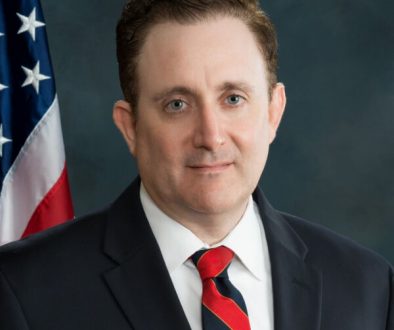Interview with Dr Costanza Rovida

With technology progressing so rapidly, it is difficult to understand why animal testing still persists, for example in the field of regulatory toxicology.
The development in 2011 of a non animal method to replace the testing of Botox products is clear proof that industry has the ability to replace even the most “complex” animal tests when it is pressed to do so. In the example of Botox, it was thanks to public opinion. The other option is by legal means. The following interview with Dr Costanza Rovida is a unique and courageous inside view of how and why the authorities are so slow to replace animal tests, even when non animal methods already exist.
Antidote Europe (AE): You are actively involved in the development of non animal replacement methods. How did you become interested in the subject ?
Costanza Rovida (CR): I am a chemist and many years ago I worked in the analytical Department of a Biotech company that developed new antibiotics. I have never worked with animals, but I could see that the information gained from in vivo experiments was often misleading, causing a consistent waste of time and money, in addition to the ethical aspect. There was another fact that was astonishing and that was the carefree attitude of the managers in ordering new tests as if animals were laboratory reagents. In 2005 I joined EURL-ECVAM, the European Union Reference Laboratory for alternatives to animal testing, and my life changed. Now I am also involved as risk assessor for the use of chemical substances and I am more and more convinced that animal tests are totally useless.
AE: What is your particular field of specialisation and how does it replace animal tests ?
CR: I work as Risk Assessor and I am in general involved in the application of alternative methods for regulatory purposes. In this field, full replacement is very difficult as in vivo tests are mandatory for the registration of chemical substances, whether they are drugs, chemicals, food additives, or anything else. In Risk Assessment, you must define the threshold for safety in the use of a substance for a particular purpose and that is by definition derived from in vivo tests. Moreover, the use of alternative methods for regulatory purposes needs a formal validation procedure before acceptance. Until 10 years ago the situation was very difficult. Now it is changing, at least in the EU.
First of all, in the EU non animal methods should be mandatory when available. For the moment, that is true only for skin/eye irritation and partially for skin sensitisation. It is only a small part of the risk assessment procedure, but it states a very important principle which has a strong impact from the cultural point of view : toxicologists are now forced to consider alternative methods and to accept that they exist ! Unfortunately, there are still many cases where this rule is not respected and apparently there is no penalty from the authorities.
Second important point is that alternative approaches in the EU are accepted even with non-validated methods, if the scientific validity is demonstrated. I am talking about strategies like read-across and weight-of-evidence.
Last, but not least, OECD is now the driving force for the revision of the entire process, asking for in depth study of the AOP (Adverse Outcome Pathways), which means studying of each step that leads to a possible adverse effect in an organism, beginning with the absorption of a substance. This process is performed with no in vivo tests, but instead with the application of physical-chemical methods, cell tests and in silico models. AOPs are still at an early stage but they probably represent how risk assessment will be done in the future.
AE: According to the scientific literature, animal testing in the field of regulatory toxicology is about as predictive as tossing a coin. Using an Integrated Testing Strategy, what levels of sensitivity and specificity can we achieve today using non animal replacement methods in the field of regulatory toxicology ?
CR: I don’t know and in any case it is not measurable. Maybe in the future when robust ITS tools will be available. Anyhow, whenever I have the opportunity to apply an Integrated Testing Strategy, I personally feel much more comfortable to make a decision on the toxicity of a substance because I acquire a good awareness of what I am doing. I have the feeling that I better master the problem.
AE: What in your opinion are the biggest obstacles to the wider development and application of non animal test methods ?
CR: They are so many that it is difficult to say which is the biggest! In addition it is also difficult to say which is causing what.
For sure, there are many practical challenges. Few CROs* may offer the solution and in general, each of them is specialised in just one piece of the puzzle: local toxicity, endocrine disruptors, neurotoxicity, etc. Very few experts can have a general overview of the entire problem and the combination of the different pieces of the information is quite complex.
Probably because of that, costs are still very high and the expertise little.
The basis of all the problems may be the lack of experience and the fear that in the end the approach will be not accepted by regulators. Perhaps, the basis is the cultural gap and the fact that toxicologists are not trained in this perspective. It is a loop that must be somehow opened and broken: I don’t learn, I don’t use, I don’t gain experience.
AE: Are there any other topics not covered in the interview that you would like to discuss ?
CR: I would like to see greater involvement on the part of the authorities. In general, people change habits when they are forced to do so by law. The law is now asking that alternative methods be considered before doing any new in vivo experiments, but this is hardly ever applied. I have counted several hundreds of new in vivo tests for skin/eye irritation in the scope of REACH. That corresponds to several thousands of rabbits that were killed for no reason, as both endpoints now have full validated in vitro alternatives. I think that the authorities should pick all companies that did that and fine them, but this is not happening. Another proposal is to give financial incentives to those companies that apply alternative strategies instead of a full in vivo study for the assessment of complex endpoints like repeated dose toxicity or reproductive toxicity. This can be a release of tax burden or a fast track in the authorisation process.
* A contract research organization (CRO) is an organization that provides support to the pharmaceutical, biotechnology, and medical device industries in the form of research services outsourced on a contract basis.




